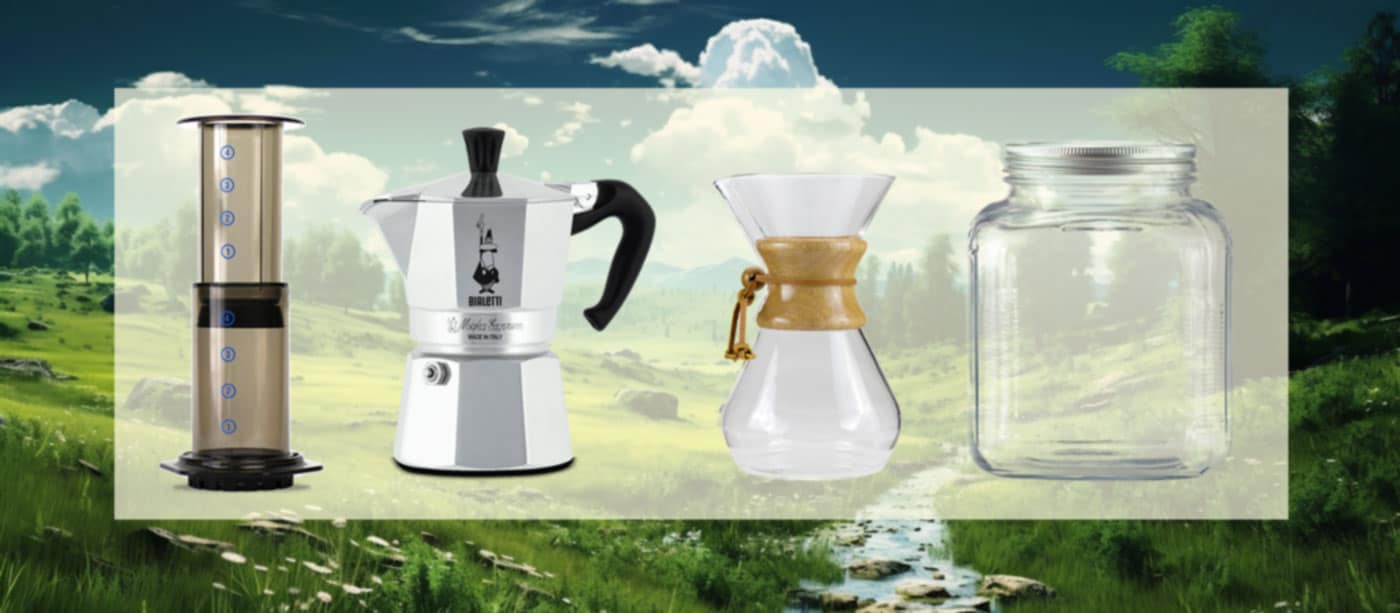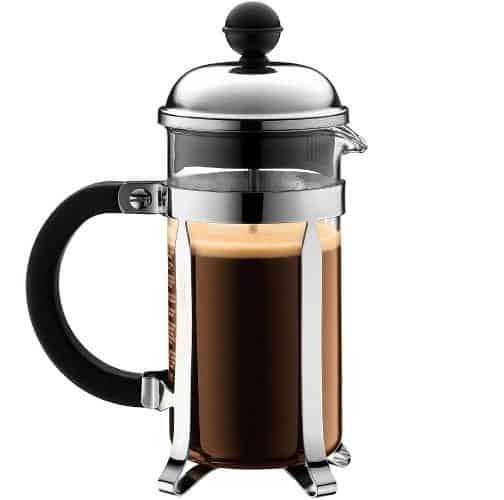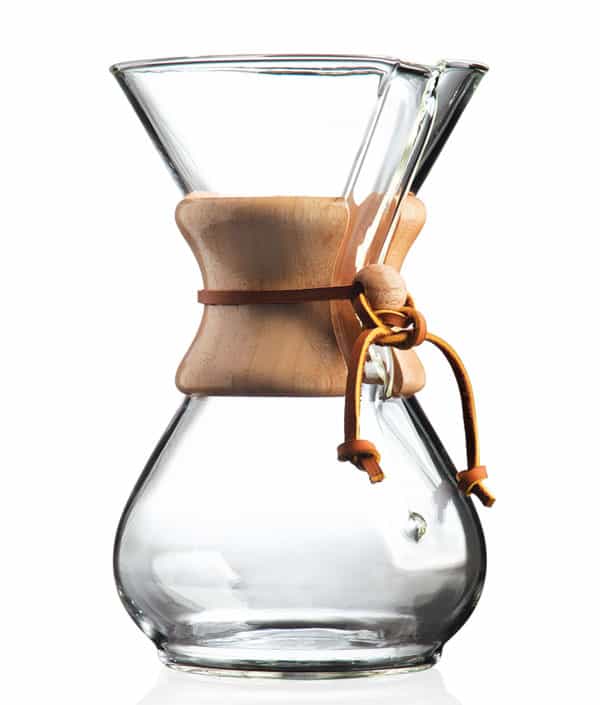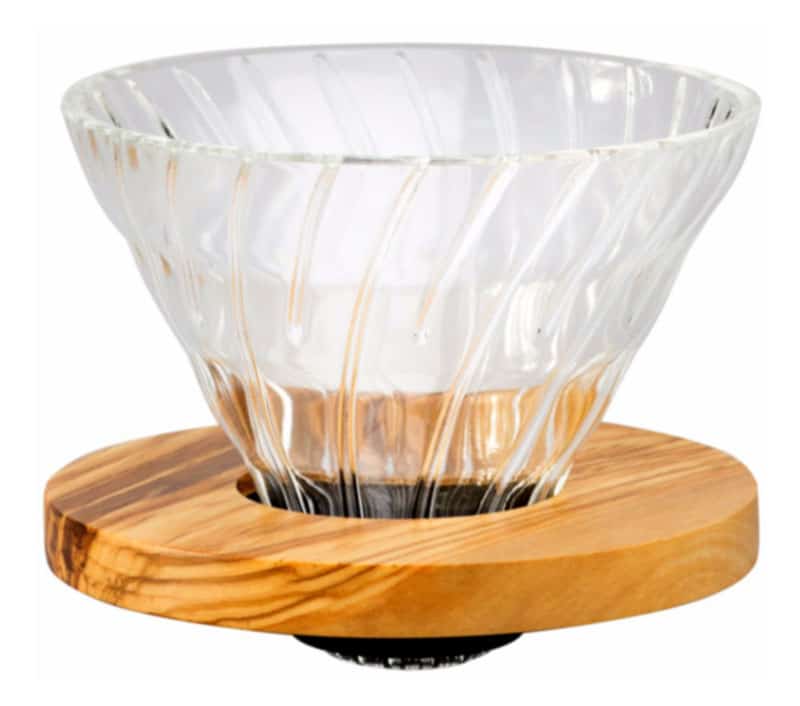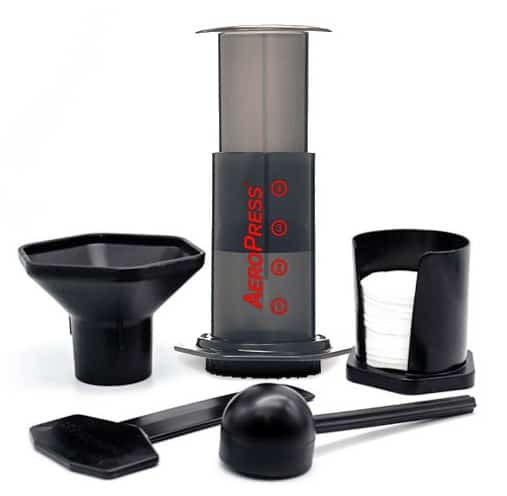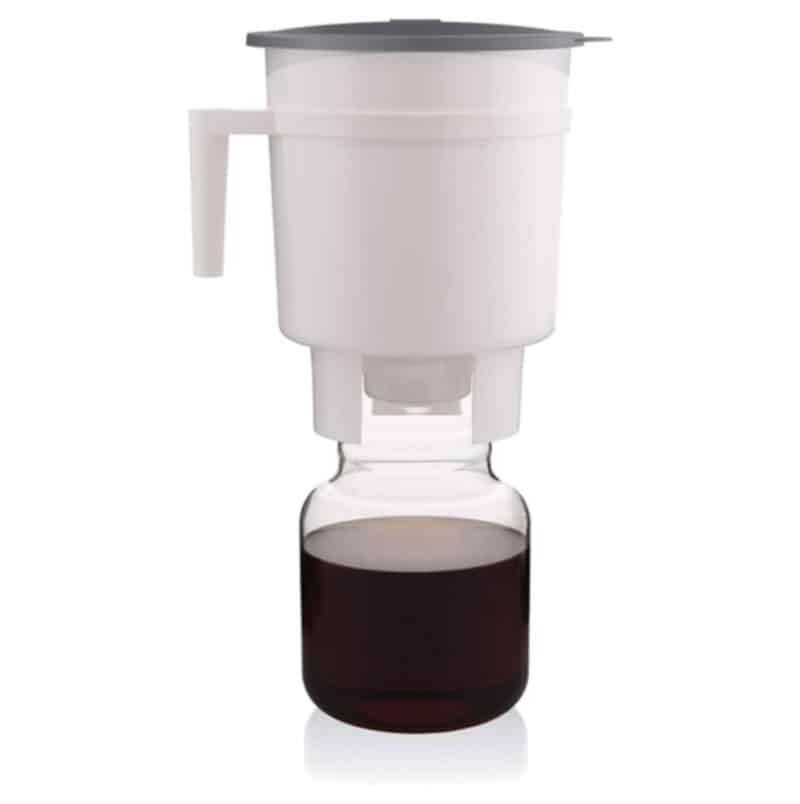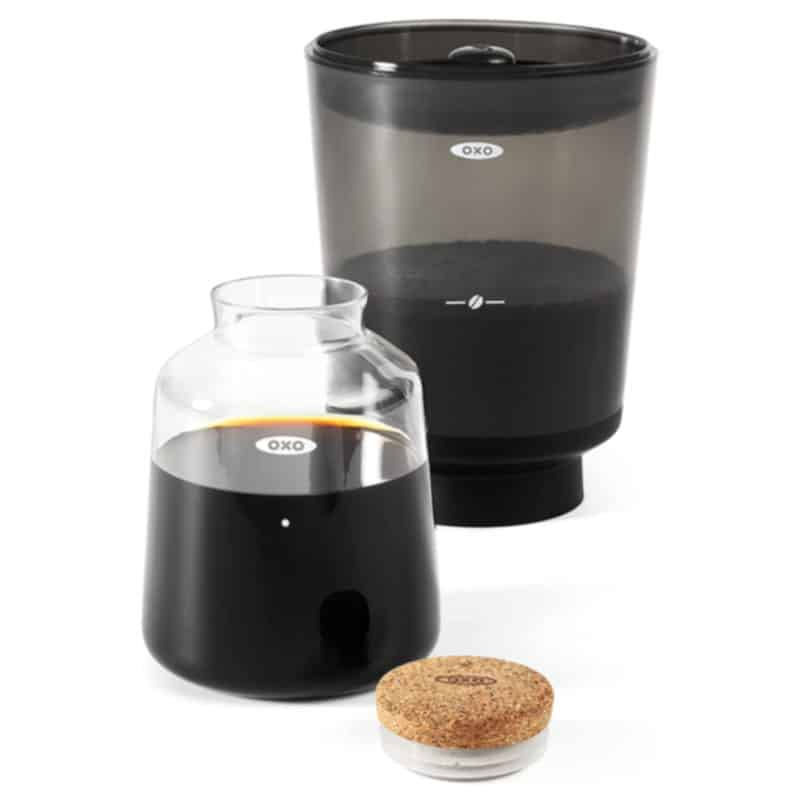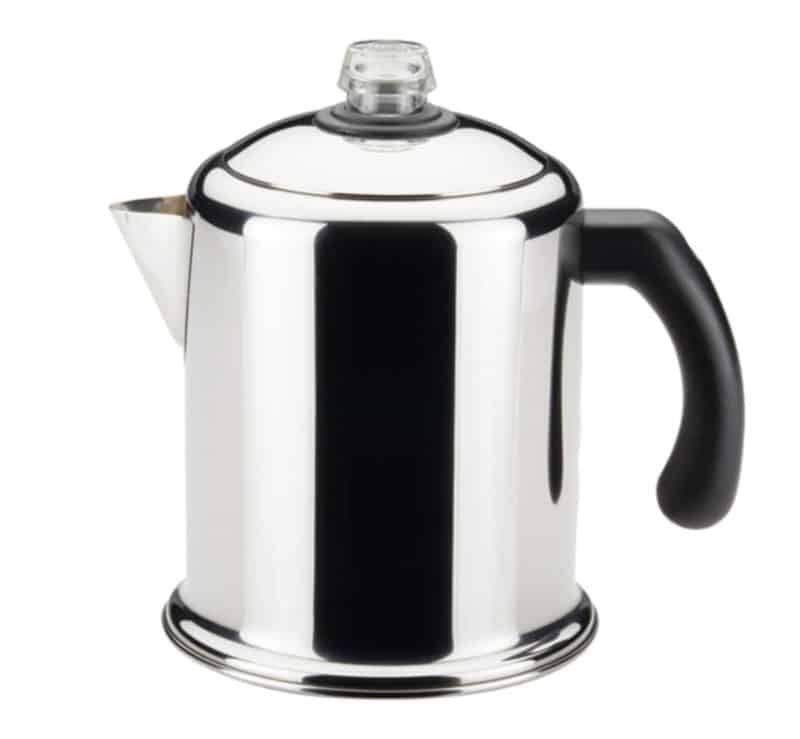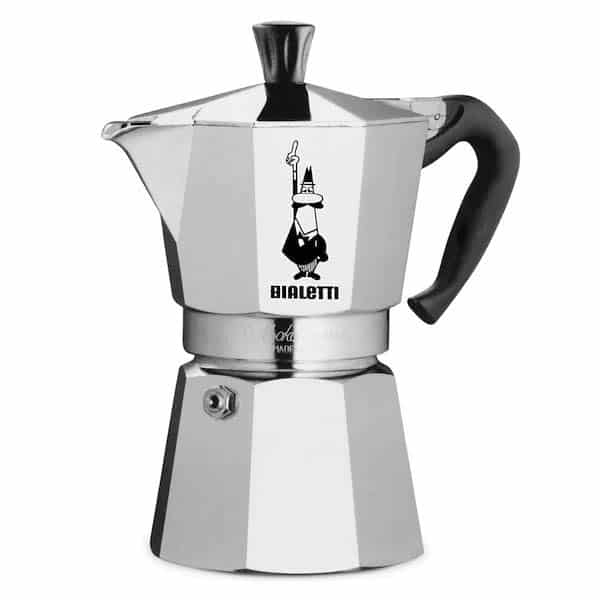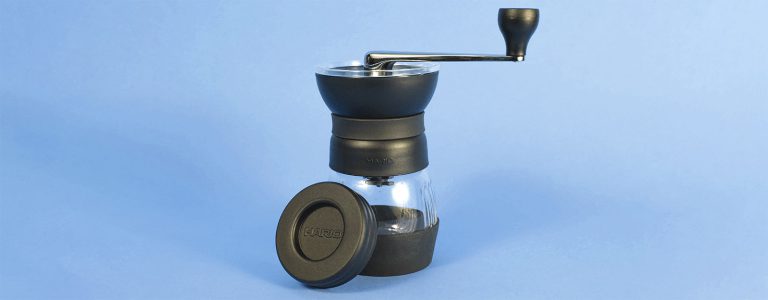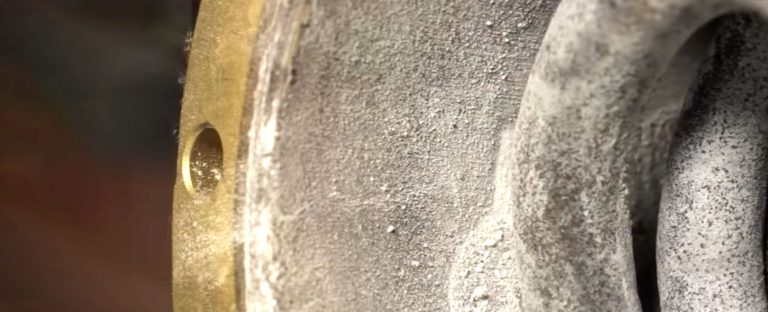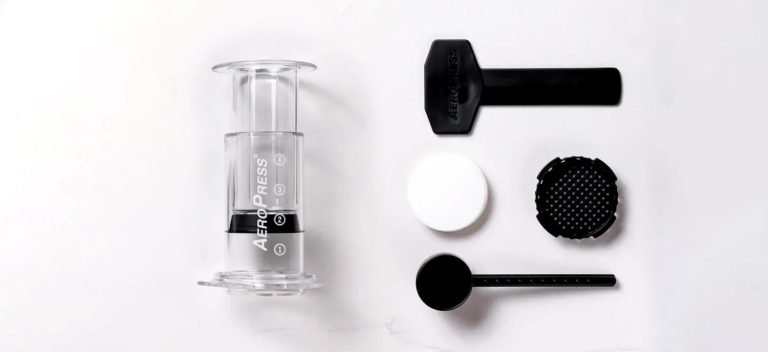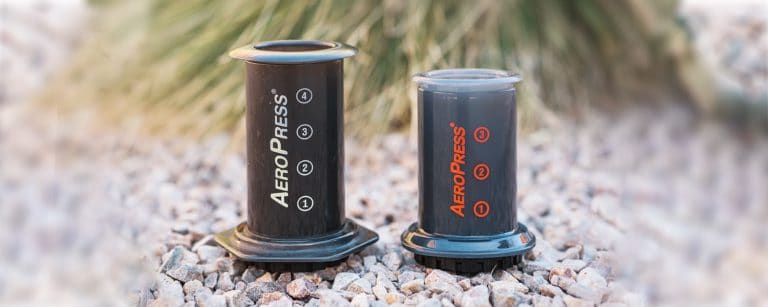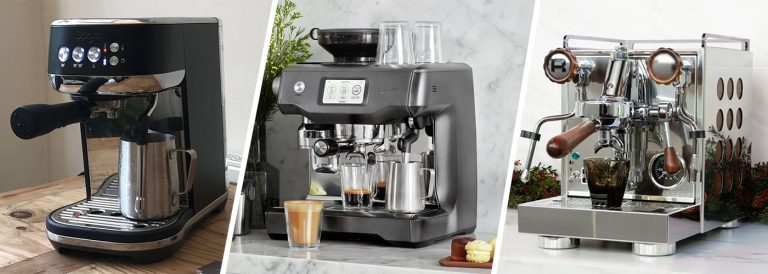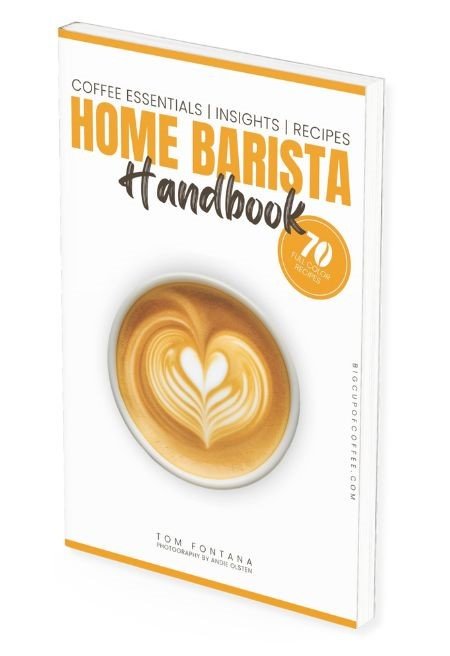9 Eco-Friendly Coffee Makers (That Still Make Great Coffee)
Being as environmentally conscious as I am, I find it important that we acknowledge how certain practices involving coffee can be harmful to the environment.
Fortunately, aside from the efforts of coffee producers to make the industry more sustainable, there are also ways that we can take part in making coffee safer for our planet – like choosing eco-friendly brewing devices.
What Exactly is an Eco-Friendly Coffee Maker?
There are different ways that a coffee maker can be eco-friendly.
- It can consume less energy,
- produce less waste,
- it can be made from sustainable materials, or
- it can tick all the boxes.
When you buy an environmentally friendly coffee machine, you are also supporting sustainable coffee industry practices.
And don’t worry, you don’t have to compromise flavor in the name of sustainability.
There are numerous eco-friendly coffee makers available that brew wonderful coffee while also being environmentally friendly. From French presses to pour-over coffee makers, there’s an eco-friendly choice for me and you.
Best Eco-Friendly Brewing Methods and Coffee Makers
Reduce your waste and use of energy when fixing your cup of joe with these brewing methods that can be eco-friendly. Here is a table summarising the recommended brewers first, followed by each method after.
| Brewing Method | Brewer | Material | Pros | Cons | |
|---|---|---|---|---|---|
| 1 | French Press | Bodum Chambord French Press Coffee Maker | Glass, stainless steel, plastic | – No need for disposable filters – Well-extracted flavor – Easy to use – Durable materials – Timeless and elegant design | – Limited coffee quantity – Requires careful handling of glass body |
| 2 | Pour Over | Chemex Classic Series Coffeemaker | Glass, wood, rawhide | – Option for reusable filters – Produces clean and even-extracted coffee – Multiple sizes – Lightweight – Simple and stylish look | – Requires attention and care while brewing – Fragile glass body |
| 3 | Pour Over | Hario V60 Series | Glass, ceramic, metal, copper, wood, plastic | – Simple design – High-quality materials – Control over brewing process | – Requires patience and skill |
| 4 | Pour Over | Canadiano Wooden Pour Over Coffee Maker | Wood, stainless steel | – Made from sustainable materials – Stylish and unique look – Produces rich coffee | – Requires effort to stir coffee into mesh sieve – Limited coffee quantity |
| 5 | AeroPress | AeroPress Original | Plastic | – Easy to use and clean – Portable and lightweight – Full-bodied smooth coffee – Micro-filters eliminate grit | – Uses more coffee per serving |
| 6 | Cold Brew | Toddy Cold Brew System | Plastic, glass, felt, silicone | – Produces smooth and rich coffee concentrate – BPA-free – Comes with reusable filters | – Bulky design |
| 7 | Cold Brew | OXO Compact Cold Brew Maker | Glass, silicon, stainless steel | – Appealing and space-saving design – Produces smooth coffee concentrate | – Smaller capacity |
| 8 | Stovetop Percolator | Farberware Yosemite Coffee Percolator | Stainless steel, glass, plastic | – Sturdy build – Retro aesthetic – No need for paper filters | – Tight lid seal for some users |
| 9 | Moka Pot | Bialetti Moka Express Espresso Maker | Stainless steel, glass, plastic | – Builds strong pressure for flavorful espresso – Easy to clean – Multiple sizes available | – Requires practice for optimal results |
1. French Press
French press is a popular choice for making eco-friendly coffee because there are no disposable filters to deal with. Instead, you use a metal mesh filter built into the plunger, that can be reused again and again. And since this method doesn’t require electricity (other than that for heating water), it saves energy.
What I like about this method is that I can easily produce a delicious cup with just a little waiting time and just by pressing down on the plunger. Less time brewing and more time savoring great coffee.
Here’s my recommended French press that you might want to check out:
Bodum Chambord French Press Coffee Maker
This coffee maker is a great tool to make your coffee with a French press. Bodum has been around since the late 1900s and has gained a good reputation for making environmentally friendly coffee.
The carafe is made with non-stain and heat-resistant borosilicate glass while the frame and lid are durable stainless steel, promising you a coffee maker that lasts. Each brew can make 3 cups of 4oz coffee with well-extracted flavor that instantly got me hooked. Additionally, I love how its design is just timeless and elegant.
Pros
Cons
Bodum Chambord product specifications:
- Materials: borosilicate glass, stainless steel, and plastic
- Capacity: 34 oz
- Size: 14.1 x 23 x 10.7 cm
- Color: Chrome
2. Pour Over Coffee Makers
Pour-over coffee offers a slower, more meditative approach to making coffee and is an eco-friendly alternative to traditional drip machines.
One of the biggest benefits of using a pour-over method is that it is non-electric and you can skip paper filters to make coffee. Instead, you can use a reusable metal or cloth filter that can last for years with proper care.
Here are my recommended pour-over coffee makers you might want to check out:
Chemex Classic Series Coffeemaker
The Chemex Classic Series Coffeemaker is a popular pick that comes in four different sizes, producing a clean and evenly-extracted coffee in different amounts such as three, six, eight, and ten cups.
This series is made of nonporous borosilicate glass with a wooden collar and leather tie. What I like about this series is that it has a simple, elegant look, but you can make it wilder by buying different material and color collars to add a touch of personality to your Chemex.
The only thing not so eco-conscious about the Chemex is that it was designed to use thick paper filters. They are compostable though, but you can always swap them for reusable metal filters as well.
Pros
Cons
Chemex product specifications:
- Materials: borosilicate glass, wood, and rawhide
- Capacity: 16 oz, 30 oz, 40 oz, and 50 oz
- Sizes: 20.9 cm in height and 7.6 cm in diameter; 21.5 x 13 cm; 22.8 x 13.3 cm; and 23.4 x 13 cm
- Color: Multiple options for rawhide and collar colors
Hario V60 Series
The Hario V60 series has a simple design, but you can achieve an exceptional cup by perfecting your technique. Don’t let the simplicity fool you; this brewer requires patience and know-how but since it gives you better control over the brewing process, it is really worth it in the end.
The V60 dripper comes in different sizes and materials that you can mix and match with decanters, such as glass, ceramic, metal, copper, wood, and plastic. Since we’re on the topic of being sustainable, I highly recommend glass and wood for your pour over. These materials also offer durability and a neat look.
Pros
Cons
Hario V60 product specifications:
- Materials: glass, ceramic, metal, copper, wood, or plastic
- Capacity: 360 ml – 1,000 ml
- Sizes: Various sizes
- Color: Various colors
Canadiano Wooden Pour Over Coffee Maker
With a unique aesthetic, the Canadiano Wooden Pour Over Coffee Makers are made by hand in Canada from sustainable wood, and each square piece is one-of-a-kind due to variations in grain patterns.
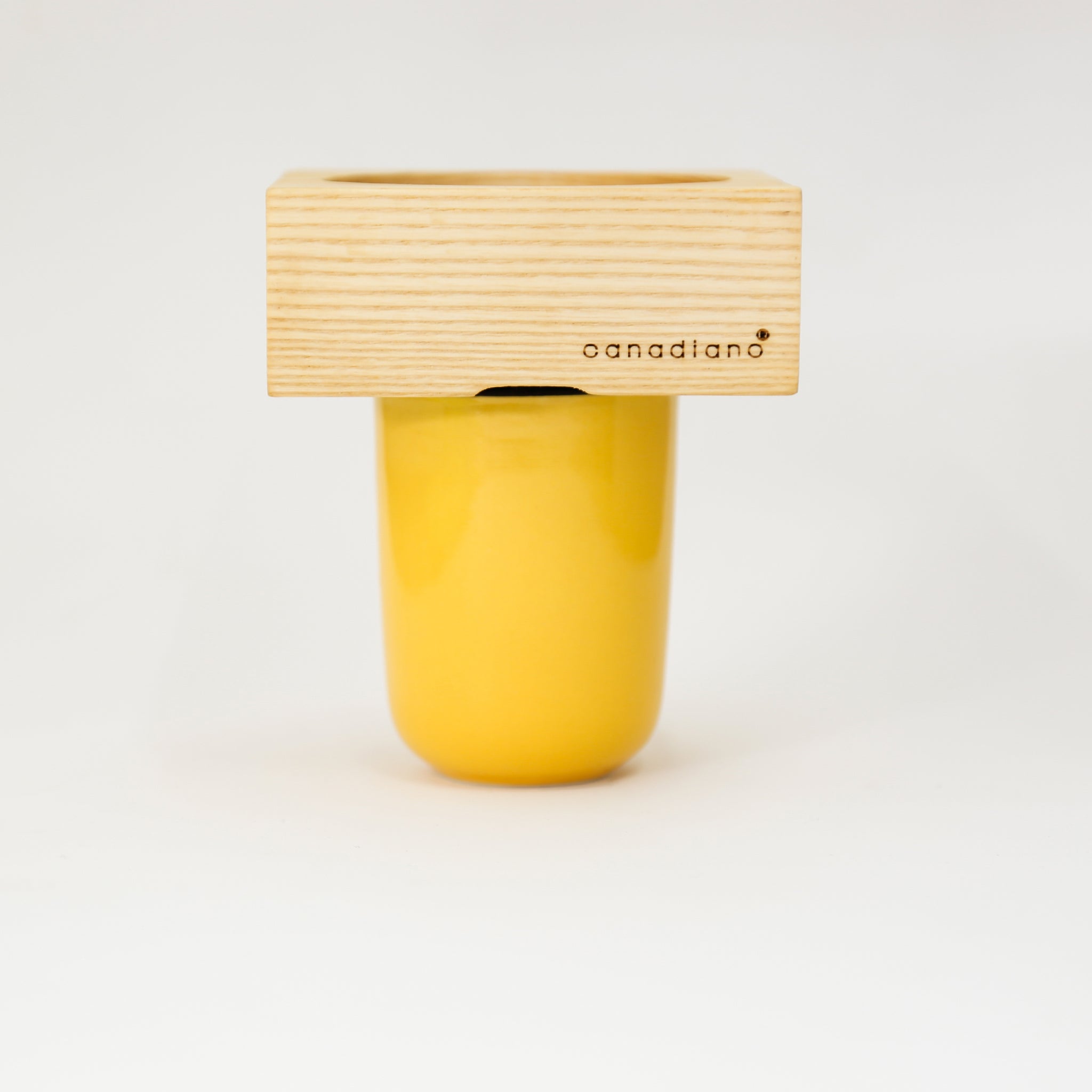
Aside from its natural beauty, this coffee maker also produces well-rounded and rich coffee. Additionally, it already has an ultra-fine stainless steel filter so you don’t need any filter in the process, reducing its impact on the environment as you enjoy your morning cup of coffee. The only downside I’ve found is that it takes time to really stir the coffee into the mesh sieve.
Pros
Cons
Canadiano Wooden Pour Over Coffee Maker product specifications:
- Materials: Wood and stainless steel
- Capacity: Produces one cup and two cups for the limited DoubleDouble variant
- Size: 11.4 x 11.4 x 5.1 cm
- Color: Various wooden tones
3. AeroPress Coffee Makers
The AeroPress coffee maker is an innovative gadget that uses air pressure to quickly brew your coffee, resulting in a smooth and flavorful cup without any bitterness.
It may be made with plastic, but the AeroPress does not use any electricity and with proper care, this coffee maker is durable enough to last for years. On top of that, it’s highly portable and space-saving, allowing you to make your brews wherever you go.
But what I really love about the AeroPress is its versatility. The brewing method allows you to experiment with different grind sizes and techniques to create a customized flavor profile that suits your taste buds perfectly.
Pros
Cons
AeroPress Original product specifications:
- Materials: Plastic
- Capacity: 10 oz
- Size: 13.4 cm height x 10.7 cm diameter
- Color: Light gray tint
Now you can also get the AeroPress in a see-through version, and also an XL version for bigger brews.
4. Cold Brew Coffee Makers
If you don’t mind some extra patience to brew a refreshingly smooth and full-flavored cup of sustainable coffee, then a cold brew coffee maker might be for you. Cold brewing involves steeping coffee grounds in cold or room-temperature water overnight or for about 12 hours.
It is the ultimate in eco-conscious coffee brewing, since you don’t even need to use any energy to heat your brewing water.
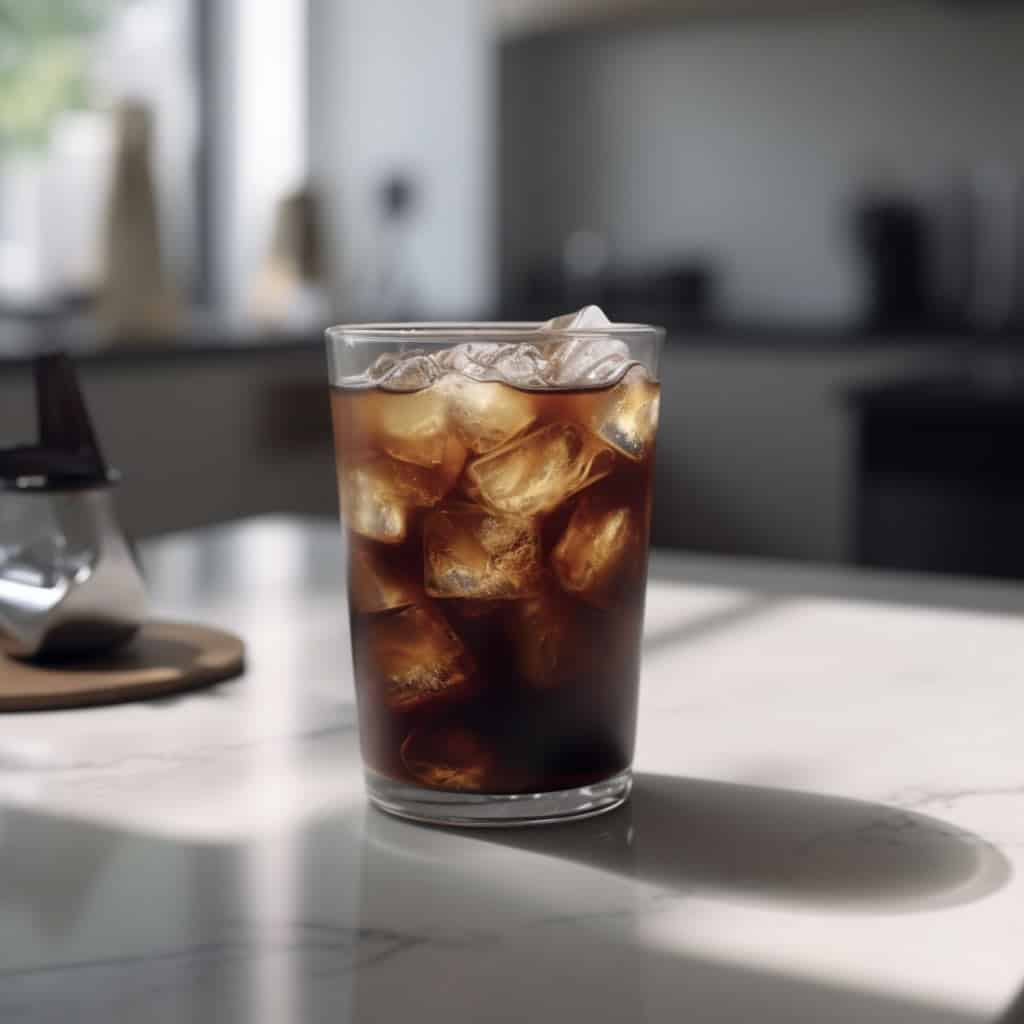
Among the many manual brewing methods out there, cold brew requires the least materials and effort from you. You can make your coffee fix with just a container and filter (or no filter at all). You only have to make it in advance and you have a coffee concentrate that can last for two weeks in the fridge.
You can just use a jar for brewing, but there are also some cold brewing products you may want to have a look at that make the process somewhat simpler. You don’t really need them though.
Toddy Cold Brew System
This non-electrical coffee maker from Toddy produces a smooth and rich coffee concentrate. As someone looking for sustainable solutions, the plastic body may turn you off. However, this BPA-free coffee maker comes with a glass decanter and two reusable filters that give you less waste to think about.
The Toddy Cold Brew system is very lightweight. The flip side with this though is that the system can be quite bulky and will occupy a lot of space in your kitchen.
Pros
Cons
Toddy Cold Brew System product specifications:
- Materials: Plastic, glass, felt, and silicone
- Capacity: 45 oz
- Size: 63.5 cm diameter x 18 cm width x 32 cm height
- Color: White
OXO Compact Cold Brew Maker
The OXO Brew Compact Cold Brew Coffee Maker is another eco-friendly cold brew maker that I really recommend. I love that it has a compact stylish design as opposed to other cold brew makers that are clunky and look like they’re some apparatus for something else entirely.
It boasts a perforated top that ensures the even distribution of water over the grounds, creating a smooth coffee concentrate in 12 to 24 hours. It also has an ultra-fine stainless steel mesh filter that prevents any unwanted ground particles from getting into your drink.
Pros
Cons
OXO Compact Cold Brew Maker product specifications:
- Materials: Glass, silicon, stainless steel
- Capacity: 24 oz
- Size: 13.2 cm diameter x 13.4 cm width x 21.8 cm height
- Color: Black
5. Stovetop Percolators & Moka Pots
Stovetop percolators and Moka Pots both involve heating water on the stove and letting the steam build up pressure to extract flavor from your ground coffee beans.
The only difference is that stovetop percolators usually have bottom and top chambers while moka pots look like small metal pitchers.
What makes this eco-friendly is that it doesn’t require electricity to function (unless you’re using an electric stove). This also means that there’s very little waste left behind after each use – no paper filters are needed.
Here are my recommended stovetop percolators and Moka pots you might want to check out:
Farberware Yosemite Coffee Percolator
The Farberware Yosemite Percolator Coffee Maker is the perfect product to experience a classic cup of coffee. The shining, stainless steel material with its sturdy construction and clear glass knob make it look retro yet classy.
The percolator has been designed in such a way that you can keep your unit shiny and new by cleaning it easily after use. With this product’s permanent filter basket, there’s no need for messy paper filters, making it a really eco-friendly option.
Pros
Cons
Farberware Yosemite Coffee Percolator product specifications:
- Materials: Stainless steel, glass, and plastic
- Capacity: 8 cups & 12 cups
- Size: 22.1 cm diameter x 22.1 cm width x 17.8 cm height
- Color: Stainless steel
Bialetti Moka Express Espresso Maker
When it comes to Moka pots, you can’t go wrong with Bialetti. Their classic stovetop espresso makers have been around since 1933, and it’s still the original moka pot that provides a truly authentic Italian-style coffee experience.
It has a patented safety valve and ergonomic handle for easier and safer use. Because it goes on top of the stove, it is also more eco-friendly as no paper filters will go to waste upon each use.
Pros
Cons
Bialetti Moka Express Espresso Maker product specifications:
- Materials: Stainless steel, glass, and plastic
- Capacity: 1, 2, 3, 4, 6, 9, 12, and 18
- Size: Various sizes
- Color: Stainless steel
Ways to Make Your Coffee Eco-Friendly
We must find more ways to make each cup of our favorite coffee more sustainable. Every year, around half a million tonnes of ground coffee waste goes to landfills.
Here are some ways you can make your coffee consumption more eco-friendly:
Conserve Energy
As much as possible, look for ways to conserve less energy every time you fix a cup of joe. A manual coffee maker is best for this, not only in reducing your carbon footprint but also in allowing you to have more control over the brewing process.
Aside from choosing one of the manual brewing methods detailed above, you can also make larger batches in one go to save energy. This is especially true if your coffee can sit for a while without compromising too much on quality, like cold brew.
Produce Less Waste
Another thing to consider is how to reduce the waste that your brew produces. For one, choose methods with reusable filters. Single-use paper filters contribute to landfill waste, so investing in a filter system that you can clean and reuse will help minimize your environmental impact. I know it’s not as convenient, but it helps.
Repurposing used coffee grounds is another creative way to make your coffee-making process more eco-friendly. Instead of tossing them in the trash, you can use them as fertilizer, skin exfoliant, and even for scented candles.
For more ideas, read my article on the different ways of recycling used coffee grounds.
Choose Sustainable Coffee Beans
It’s also essential to choose sustainable beans when selecting your coffee for brewing. Look for Fair Trade or Bird Friendly certified options – these designations ensure that farmers were paid fairly for their work and that the beans are shade-grown, meaning natural habitats were preserved during production.
Click here for my in-depth article on how you can further make your coffee consumption environmentally friendly.
Stay Away from Coffee Pods
Coffee pods are popular because they are super convenient, but they are the biggest waste producers in the entire coffee industry.
In fact, the inventor of the Keurig K-Cup himself has said that he regrets inventing the K-cup because of all the waste it produces, and its effect on the environment. Think about that…
Frequently Asked Questions (FAQs)
Here are the answers to some common questions about choosing sustainable coffee makers:
Single-use coffee pods commonly used in pod machines often end up in landfills and contribute to environmental waste. However, there are reusable pod alternatives available that can reduce waste, but the convenience factor is nullified.
There are manual espresso makers out there like the Flair single-arm machines, but you can also use other brewing methods to make espresso without resorting to a coffee machine.
It is best that you choose brewers with long-lasting materials such as glass, aluminum, and stainless steel. Brewers made out of plastic materials will last the shortest amount of time.
Most traditional drip coffee makers are not so good for the environment. Aside from the use of electricity and single-use filters, the cheaper models have plastic bodies, and will only last 1-2 years.
Final Thoughts
As a coffee lover and environmentally conscious individual, I believe that making sustainable choices in our daily coffee routines can really make a big difference. Choosing an eco-friendly coffee maker not only reduces your carbon footprint but also supports sustainable practices in the industry.
Let’s do our part in saving the planet for our kids to enjoy.

